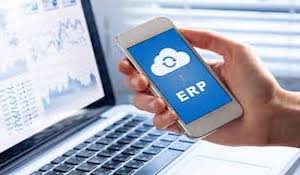2 min read
True Cost of Ownership: Transitioning an Older ERP System to Acumatica
 Murray Quibell
Aug 30, 2024 2:58:22 PM
Murray Quibell
Aug 30, 2024 2:58:22 PM

The Costs and Benefits of Replacing Your Older ERP System
In today's rapidly evolving business landscape, upgrading from an outdated legacy system to a modern ERP solution is becoming increasingly critical. Technological advancements, intensified competition, and the demands of informed consumers drive businesses to reassess their ERP systems' true costs. Choosing between an older ERP system or embracing a modern ERP system, such as Acumatica, is pivotal for long-term success.
The Need for Modern ERP Solutions
Modern ERP systems offer several key advantages: enhanced security, scalability, adaptability, and mobility. These features are highly beneficial, yet many businesses are deterred by the perceived high costs associated with these benefits. However, an essential question often overlooked is: how much is maintaining an outdated legacy system really costing your business?
Defining the True ERP Cost
Understanding an ERP system's true cost involves calculating the Total Cost of Ownership (TCO) and the Return on Investment (ROI). These two components together form the "ERP True Cost."
Total Cost of Ownership (TCO): This includes not only the obvious upfront expenses like hardware, software licenses, and initial implementation but also hidden costs such as ongoing employee training, system customizations, and future upgrades.
Return on Investment (ROI): This measures the benefits of the ERP system in terms of increased productivity, streamlined processes, and improved decision-making capabilities.
Acumatica's ERP TCO & ROI Calculator
Acumatica has developed an ERP TCO & ROI calculator to help businesses determine the true cost of implementing a new ERP system. This tool allows organizations to input specific data and receive a customized analysis of potential costs and benefits. Unlike some calculators focusing solely on their products, Acumatica's tool enables comparisons across different ERP solutions, providing a comprehensive perspective.
Why Calculate True ERP Costs?
Calculating the true ERP costs is crucial for making informed decisions. By understanding the TCO and ROI, businesses can understand the financial implications of switching to a modern ERP system versus maintaining their legacy system. This comprehensive analysis helps evaluate long-term benefits and justify the investment in a new system.
Benefits of Modern ERP Systems
- Adaptability: Modern ERP systems can easily adapt to changing business processes, ensuring your business remains agile and competitive.
- Increased Productivity: Employees can focus on more value-added tasks by reducing redundant data entry and integrating systems.
- Streamlined Processes: Automation and integration eliminate manual processes, improving efficiency and accuracy.
- Integrated Operations: Modern ERP systems provide a unified view of the business, facilitating better decision-making.
- Mobility: Employees can access the system from anywhere, enhancing flexibility and responsiveness.
- Customizable Dashboards and Reports: Tailored information enables better business insights and decisions.
- Enhanced Collaboration: Seamless collaboration with suppliers and customers improves business relationships.
The SaaS Advantage
Modern ERP solutions offered as Software as a Service (SaaS) bring additional benefits:
- Lower Upfront Costs: SaaS models typically require lower initial investments compared to traditional systems.
- Scalability: The system can grow with your business, allowing you to scale operations without significant additional investments.
The Hidden Costs of Legacy Systems
Legacy systems, despite their familiarity, come with significant hidden costs. Maintenance fees can range from 16% to 20% of the current list price annually, meaning you're repurchasing the system every few years. Additionally, legacy systems often suffer from limited support, necessitating constant IT intervention, outdated hardware, and a lack of mobile capabilities, all of which can stifle business growth.
Making the Transition: A Less Overwhelming Prospect
Understanding the true costs of legacy and modern ERP systems through tools like Acumatica's ERP TCO calculator makes upgrading less daunting. This knowledge empowers businesses to make informed decisions, ensuring that the investment in a new ERP system aligns with their long-term strategic goals.
Transitioning from a legacy system to a modern ERP solution like Acumatica is significant but necessary for sustained business growth. By calculating the true cost of ownership and evaluating the return on investment, businesses can make strategic choices that align with their objectives and market demands. Acumatica's ERP TCO & ROI calculator is invaluable in this decision-making process, offering clear insights and comparisons to guide businesses toward the best ERP solution for their needs.
If you have any questions or need further assistance understanding the true cost of a modern ERP system, please contact us. As an experienced Gold Certified Partner, Aqurus Solutions is committed to helping our customers grow and succeed by providing tailored ERP solutions that meet their unique needs.
Learn 4 Reasons Companies Choose Acumatica

Five Signs You’re Ready to Upgrade QuickBooks to a Modern ERP
5 Signs You're Ready to Upgrade QuickBooks to a Modern ERP As your business grows and evolves, you might notice that your current accounting...

From Chaos to Clarity: Why System and Process Evaluations Matter
Getting Ready for ERP Success with System and Process Evaluations Examining your business closely is important before starting a digital...

